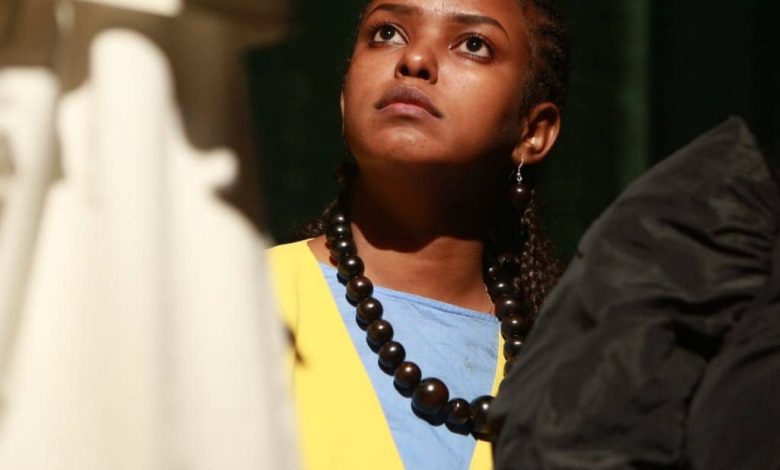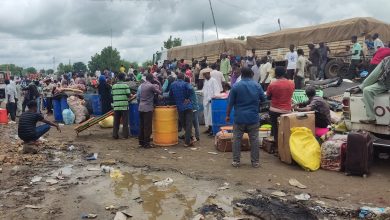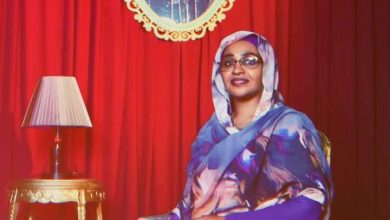Actress Siza Sorkatti: Children are more likely to be disconnected from reality in the times of war

Sudan Events: Magda Hassan
Siza Sorkatti is an actress and dancer who began her artistic career in 2016, and since then she has participated in many prominent plays such as “Trumpet Government,” “Oshar Milk ,” “The Book of Judgment,” “The Death of Zeus,” “The Accounting Book,” “The Return of Kush,” “Bahr Al-Zaman”, “Fatima Al-Samha” and “Noon Al-Fajwa”
She has a great interest in expressive dance, and is particularly interested in children’s theatre. She also participated in two films, “Black Henna” and “Hahay of the Dogs,” in addition to her work in cultural administration and the latest project, “Narrative Acting Performance Workshop,” which she implemented in Cairo in 2024. Siza’s interest in stories crystallized in a project. She submitted for a Goethe Institute grant, which she won. It is expected that her work will be published within six months in this space. Siza explains the features of her artistic project.
*Tell us about your project that won the grant?
I started thinking about the project (Habooba Wansini) after the war, especially since children are more likely to be disconnected from their social and historical reality during the period of wars in general, in addition to this being the period in which heritage is most greatly lost.
*How was the beginning?
I started with Sudanese fairy tales and began telling them to children in Cairo on a cultural day for children in the Al-Berish Tent.
On another day, “Ratina” devoted it to children. Both times I told them the same story (Fatima Al-Samha) in the style of my grandmother, Al-Zein Salem, may God have mercy on her, and the children were interested and happy. I was able to gauge their admiration for the idea after the end of the story, and I began asking them about the events of the story.
*How will this work be presented to children?
Last year, I met Mr. Motasem Al-Juaili, owner of Sanabel TV, and we started thinking together about projects related to children and how we could implement them, as he was interested in youth and supporting them. As soon as I found out that the Goethe Scholarship had been opened, I thought about a short story project and went to Professor Motasem and told him that I was thinking of writing old fairy tales through animation. He said to me, “Siza, I am with you, and this is a project no less important than Sanabel’s projects.”
When I applied for the production grants project, I was presented with the name “Habooba Wansini” project, which is an animation series for children in partnership with Sanabel Children’s Channel in implementing the work.
*Where did the name “Habooba Wansini” come from and what is its relationship to heritage?
“Habooba Wansini” is the old oil lamp, it was called “Habooba Wansini” because the children used to gather around it. My first association with “Habbouba Wansini” was in 2018 during the performance of the play “One Thousand and One Nights.”
*What sources did you rely on in your work on the project?
I was very excited about the project, and for the past six months I have been trying to navigate the fairy tales and connect with all the relevant people. So I contacted Mr. Ismail Al-Fahail, the director of the Heritage House, and he gave me a lot of advice.
I also contacted Professor Muhammad Yahya (Al-Hagai), considering that I work on fairy tales and he is one of the people who cares about children.
*How will the project be produced?
The “Habouba Wansini” project originally consisted of two stages: The first stage is to complete the animation and the second stage is to reach the children in their gathering places, whether schools, or create their own event and present different fairy tales through the main character, “the Grandma,” and this will be in cooperation with all Sudanese throughout the country, God willing.
*What about the second stage?
The second stage began with communicating with “Dream Team,” a team that supports artistic projects. In the second stage, an actress is chosen to play the role of the grandmother and tell the story to the children in Port Sudan. I contacted Musab Hassouna, the owner of the initiative to train children to make films, regarding the second phase of the project, and found his approval of the initiative to train children and the “Dream Team”. They both agreed on one word (Let’s do it).
*The painting attached to the project summarizes the idea. Who drew it?
The painting was drawn for me by artist Obada Juma Jaber before I stood before the project selection committee and presented my project to them.
– Habouba Wansini is and old oil lamb used to be used in Sudanese culture.
– Habouba: Grandmother.
– Wansini: Tell me a story.



